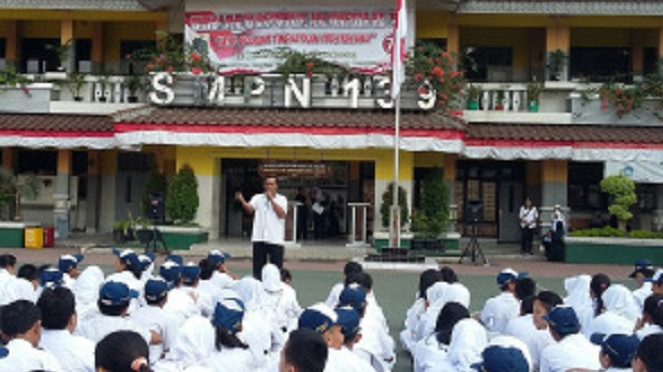Recognize the Characteristics of a School that is Safe from Radicalism

Bara dalam Sekam
June 11, 2018
This is bad! Islamic books NU and Muhammadiyah are less interested in millennials
June 11, 2018VIVA – Soon, the education agenda in Indonesia will enter a new academic year, which usually falls in June-July. Some of you may have started to consider and select which schools are right for children to continue their education. Including a series of expectations of increasing children’s intelligence when they enter a new school.
General considerations when parents make the choice of a child’s school, usually involve aspects of teaching patterns, curriculum, school culture, achievement, cost, and location. These aspects are indeed important to pay attention to so that individual children’s needs for education can be met. Moreover, schools also function as agents of learning and education, as well as second homes for children.
Considering that in recent years the issue of radicalism in academia, parents should add this aspect in choosing schools for their children. The radicalism that spreads in educational institutions is not just an assumption. Survey data from the Center for the Study of Islam and Society (PPIM) Syarif Hidayatullah State Islamic University shows the influence of intolerance and radicalism has spread to many schools and universities in Indonesia.

From a study involving thousands of students with a generation Z background (born in 1996-2012) from 34 provinces, it was found that more than a third of Muslims agreed that jihad was a war, especially a war against non-Muslims. As much as 1 in 5 respondents agreed that the suicide bombing was Islamic jihad.
A third of generation Z Muslims in the respondent agreed that Muslims who apostatized (leaving Islam) should be killed. Nearly a third of them also think that intolerance towards minorities is OK.
In line with the research of UIN Syahid, M. Abdullah Darraz, Executive Director of the Maarif Institute said, “We have been conducting research since 2011 and found that the symptoms of radicalism have entered schools in such a way and until now the escalation is quite high, higher than before. “He said to VIVA some time ago.
The danger of radicalism
Referring to that data, radicalism in schools is important for us to be aware of. Why? According to Alissa Wahid, National Coordinator of the Gusdurian Network, an activist for interfaith tolerance, as well as child and family psychologists, radicalism can be the culprit for children to adopt a narrow mindset that drives them to become perpetrators of violence.
“When people go through a radicalization process, the values in their lives change. One of these values is to allow violence, for the sake of the goals to be achieved, ”Alissa said in a telephone connection to VIVA, Thursday, May 17 2018.
Apart from that, radicalism is also the root of acts of terror, although not all of them. “Is it certain that everyone who experiences radicalization becomes a terrorist? Not. But a terrorist must start from radicalization, ”said Alissa.
Maybe you are wondering where were the schools infiltrated by radicalization from? According to Darraz, there are two factors that become the entry points for radicalism infiltration, namely internal and external. In internal factors, involving teachers and school principals who are also agents of radicalization. Meanwhile, external factors, namely outsiders who come to school, usually enter through seminars or extra-curricular mentoring activities.
So, if those who play a role are educators (teachers, principals, lecturers) then it is not impossible for all levels of education, from early childhood to tertiary education levels, to be prone to radicalism.
Direct survey to schools
Furthermore, Alissa agrees that parents need to feel it is important to choose a school in order to fortify children from the infiltration of radicalism. How come?
“I suggest that parents go directly to the school and see what it is like? If it’s a public school, usually there are certain religious ornaments in the classroom. You know, this is a public school and not all religions, only one religion. Now, in my opinion, these are signs, meaning that in that school, the ecosystem is exclusive to one religion, ”said Alissa.

“For me, this illustrates that there are superiority practices. Because if he is a public school, which should not take sides with one particular religion, if you want to put up religious ornaments, all religions must be installed, ”added Alissa.
In addition, another indication that state schools apply superiority practices based on one religion can be seen from the regulations on religious holidays for minorities in the school, “Parents when surveying schools, must ask that too. If minority groups are here to celebrate their religious holidays, inside or outside of school? If it is outside of school, it means the practice is intolerant, ”said Alissa.




